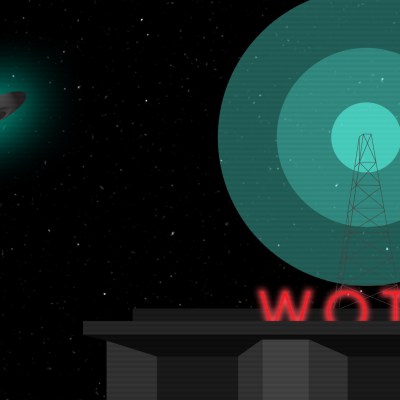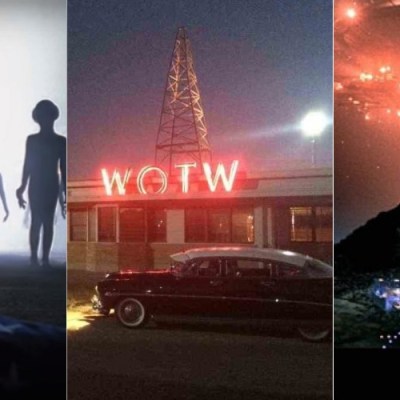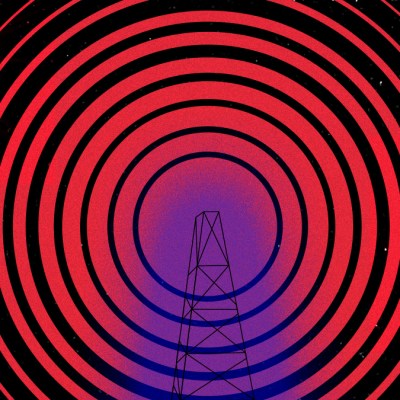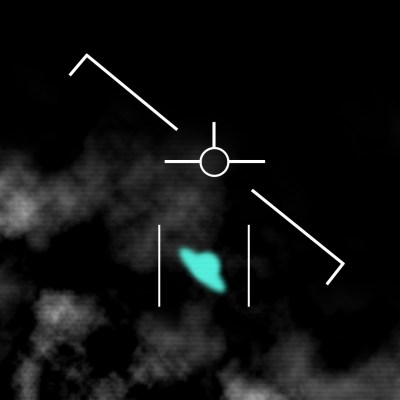The Twilight Zone: The Best Extraterrestrial Episodes
Amazon Studios’ mysterious new feature film The Vast of Night was spiritually influenced by Rod Serling’s The Twilight Zone. We revisit the iconic extraterrestrial episodes of the original series.
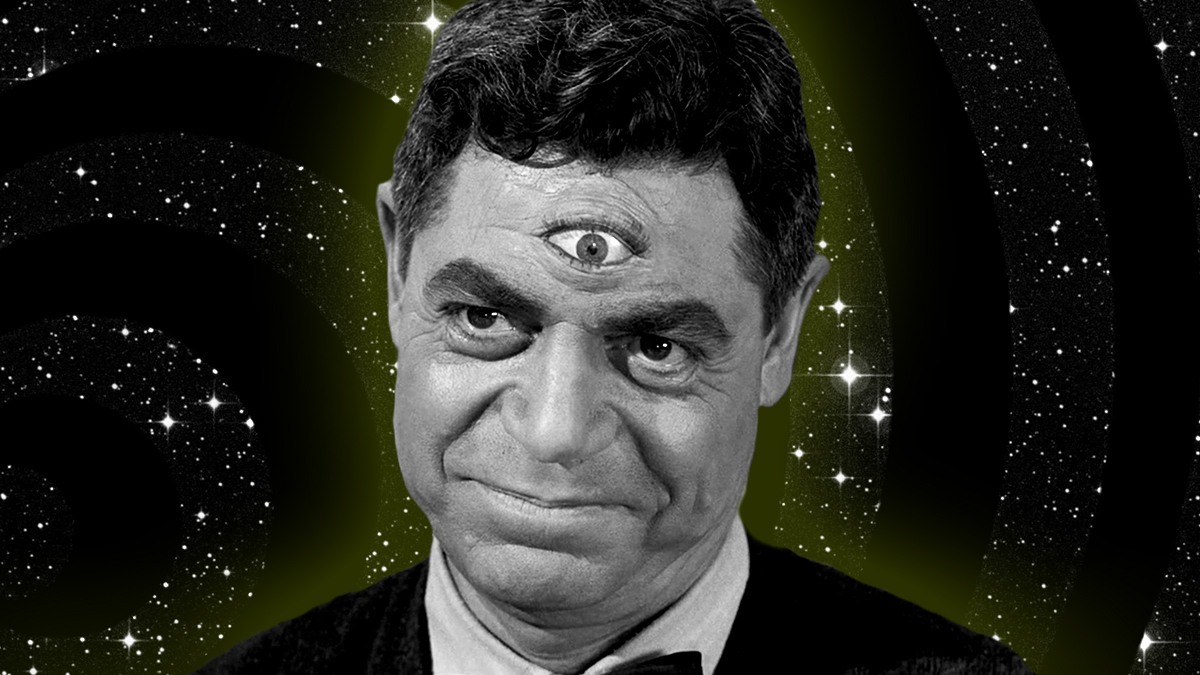
This article is presented by: 
When Rod Serling first invited viewers into The Twilight Zone, his dimension of sight, sound, and a land of wondrous imagination 60 years ago, there was no looking back. Once audiences had crossed over into that realm between science and superstition their minds—and television storytelling—were permanently altered.
Running for five seasons, from October 1959 until June 1964, The Twilight Zone helped legitimize sci-fi as a serious genre on television. Its cautionary tales of dark irony and serendipity continue to influence popular media. From The X-Files, to The Simpsons, Black Mirror, Fringe, The Mist, Ex Machina, Her (the list goes on, and on), Rod Serling’s anthology series has a permanence the writer himself didn’t anticipate—and is frequently considered one of the greatest TV shows of all time.
You can see The Twilight Zone influence in Amazon Studios’ latest feature, The Vast of Night. The film from director Andrew Patterson, which is now streaming on Prime Video, is set in the 1950s over the course of one night in a small town, as two teenagers explore the mystery of strange noises transmitted across radio signals.
The eerie, character-driven The Vast of Night feels like a spiritual cousin to Serling’s show and even opens with a direct homage to the TV classic. Speaking of visitors from “out there,” in addition to stories from the Zone’s fifth dimension—which involved talking dolls with a grudge, masks that reveal the true nature of the wearer, or the hitchhiking embodiment of death—some of the greatest episodes focused on otherworldly explorations and invaders from other planets. To celebrate the release of The Vast of Night, the following are the five best Twilight Zone episodes that looked to the stars.
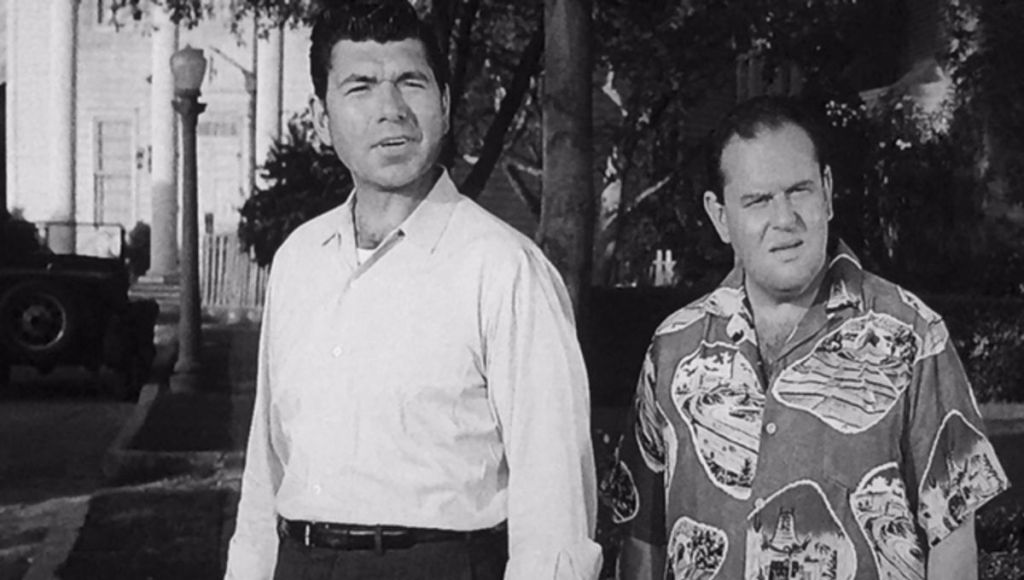
The Monsters Are Due On Maple Street
The 22nd episode of season one is rightly considered one of the best from The Twilight Zone.
A rather mundane day on Maple Street is interrupted by the shadow of something passing overhead, soon followed by disruptions in the neighborhood’s electricity. A young boy’s sci-fi-fueled imagination spins a yarn about invading aliens posing as humans, which gives way to paranoia. The neighbors become frantic, pointing fingers and hurling accusations that each is an alien. And as the crowd tears one another apart, the “real” aliens observe nearby, commenting how easy it is to conquer humans simply by manipulating their suspicions and biases.
“Maple Street” is peak Serling, who wrote the episode. The story has been used as an allegory for McCarthyism, the Red Scare, terrorism and Islamophobia, and more…and with good reason. Substitute any crisis that stokes mob mentality—a pandemic for instance—and the message is pretty clear: When routine is upset, and the chips are down, civilized life crumbles pretty quickly, and humans will give in to prejudices and find a scapegoat to blame.
In the especially grim closing narration, Serling reminds us: “Prejudices can kill… and suspicion can destroy… and a thoughtless, frightened search for a scapegoat has a fallout all of its own—for the children and the children yet unborn. And the pity of it is that these things cannot be confined to the Twilight Zone.”
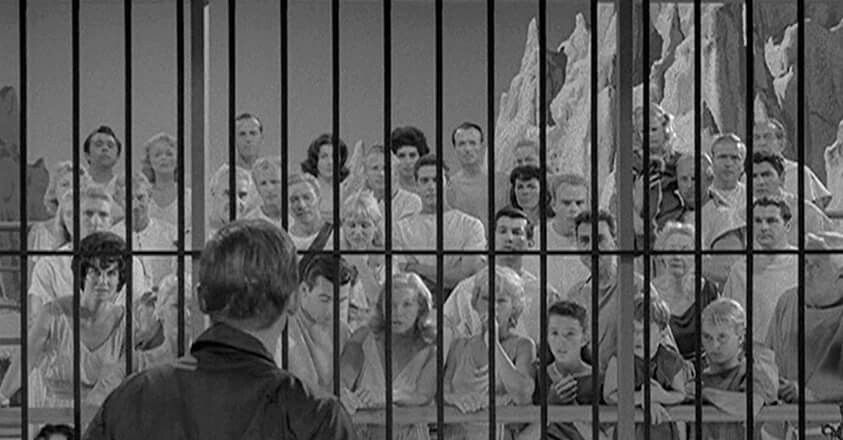
People Are Alike All Over
“You’re looking at a species of flimsy little two-legged animal with extremely small heads, whose name is Man.”
With that opening narration, Rod Serling sets up the twist for Episode 25, which aired just three weeks after “The Monsters Are Due on Maple Street.” Based on the story “Brothers Beyond The Void” by Paul W. Fairman, with a teleplay by Serling, “People Are Alike All Over” begins on Earth the night before two astronauts are to begin their mission to Mars.
Read more
UFOs: From Phenomena to Pop Culture
As they discuss any life they may encounter on the Red Planet, an astronaut named Marcusson says he’s confident all life—created by god—will be similar to humans, and thus inherently good. Conrad, a scientist, disagrees and fears the lifeforms they may encounter. Marcusson dies after a crash landing on Mars, and Conrad is “rescued” by a race of humanoid Martians, who promise the Earthman they seek to repair his ship, and will provide shelter for him to rest. The telepathic Martians show him to a well-appointed mid-century American home—with the best Scotch Conrad has ever had—and he begins to settle in. Until he tries to exit the house, and discovers he is trapped. As a display window opens, Conrad encounters Martians peering at him from the other side of bars. And outside the window a display sign reads, “Earth Creature in his native habitat.”
A human in a zoo, Conrad cries out to the sky, “Marcusson! Marcusson, you were right! You were right. People are alike. People are alike everywhere!”
The irony of the story is that cynic Conrad is right to be fearful of other lifeforms, but Marcusson was also correct that “people” on other planets would behave just as humans—which is to say behave barbarically and lock animals in cages. But Conrad also plays the role of the “flimsy animal” with a “small head” by becoming so consumed with fear he rejects his own humanity, and refuses to grant a crewmate his final wish.
The “humans in zoos” trope has also appeared in Star Trek, Slaughterhouse-Five, and even Planet of the Apes (which starred Roddy McDowell, who plays Conrad, and featured writing by Serling himself).
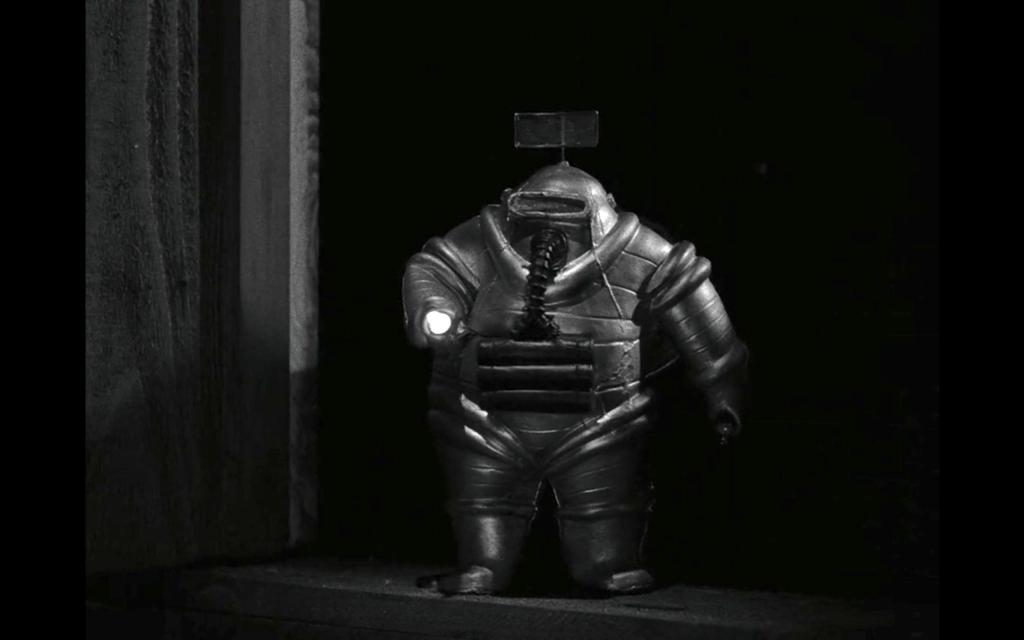
The Invaders
An older woman lives alone in a farmhouse Serling describes in his opening narration as out-of-the-way, “bleak, wasted, dying,” and without electricity or gas. Her only problem has been finding enough food to eat—up until the moment she hears noises on the roof of her crude home. Small figures, appearing almost robotic in strange pressure suits, attack the woman with sci-fi blasters. But her terror turns into resolve, and she goes on the attack. She destroys one invader, and follows the other to the roof, and discovers a classic flying saucer—which she demolishes with a hatchet. As she smashes the craft, a transmission in English is heard from within: His partner is dead, and the planet is occupied by unstoppable giants. The camera then shows words on the saucer: “U.S. Air Force Space Probe No. 1.”
Written by Richard Matheson, a giant of science fiction literature and a frequent Twilight Zone contributor, The Invaders is notable for being an almost entirely silent tale. The woman (played by Agnes Moorehead, of Bewitched fame) grunts and cries, but doesn’t speak. So the twist of the transmission, revealing that the intruders were Earthlings all along, hits with an extra punch.
Also, despite the “giant step across the sky” Serling describes in the closing narration, the people of Earth act as conquerors, seeking to attack and overtake the indigenous residents without provocation. In this way, this second season episode reinforces the message from “People Are Alike All Over”: if aliens are at all like humans, it’s best to avoid them completely.
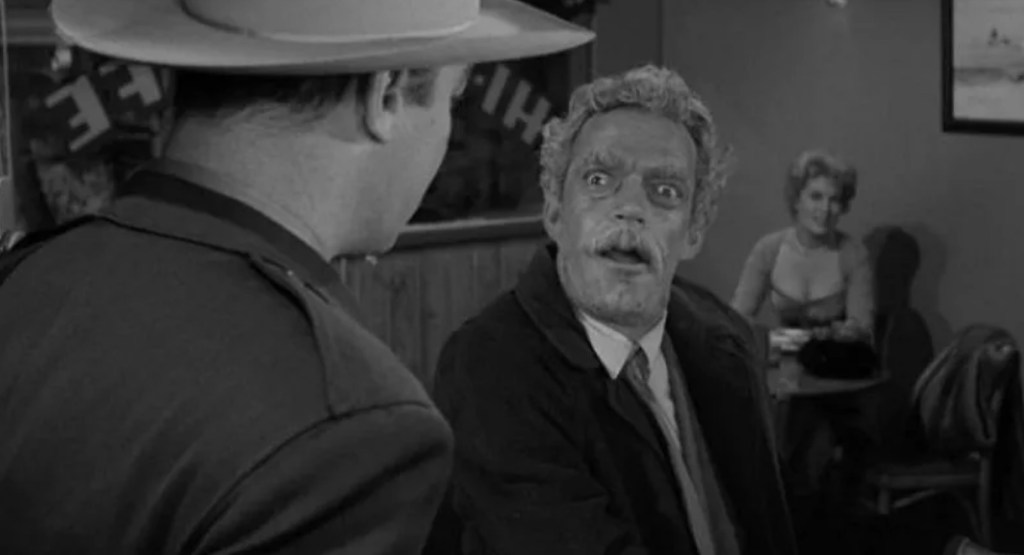
Will The Real Martian Please Stand Up?
Just because you’re paranoid doesn’t mean the Martians aren’t invading. That’s the message of this incredibly tight season two episode written by Serling, and serving as something of a counterbalance to “The Monsters Are Due on Maple Street.”
During a snowstorm, a pair of state troopers are on the case of a UFO sighting, and find something frozen in a nearby pond. They follow tracks to a diner, and find a bus parked outside. Inside, there is a cook, bus driver, and seven bus passengers. The bus pulled over because of the storm, and the bridge over that pond was closed (which relieves the driver, who finds the bridge unsafe). The troopers ask for a passenger manifest, and the driver says he didn’t need one since he only had six passengers. So why are there seven in the diner?
What follows are paranoid accusations between the troopers, the driver, and the passengers—an older couple, a younger couple, a dancer, a businessman, and a wild-eyed coot, with each accusing the other of being a Martian in disguise. Even the younger couple begins to suspect one another. The old coot seems to relish in the chaos, the dancer is a bit too quiet, and the businessman aggressively interrogates. Tension builds as odd phenomena occur—the jukebox turns on and off, lights flicker, the sugar bowl explodes—so there must be a Martian in their midst.
The mystery continues until word comes the bridge is reopened, much to the driver’s dismay. They are all allowed to leave, and some time passes. The businessman returns to the diner, orders a coffee from the cook, and explains—as he lights a cigarette with a third hand—that the bridge wasn’t safe after all. It collapsed, and the bus, all of the passengers, and the troopers, perished in the icy waters below. As for him, well, he was the Martian, and he has come to Earth to prepare it for colonization.
Then the Twilight Zone delivers a final twist: Rather than fainting at the sight of a man with three arms, the cook removes his hat and shows off a third eye. Earth is perfect for colonization, for sure, which is why Venusians like him decided to take it for themselves years ago.
The story is essentially a bottle episode for the Twilight Zone, and it pits its characters against one another by giving them a real reason to be concerned. But the tight twists of the story also underline that sometimes the alien or stranger in our midst is indeed up to no good, and those villains can easily pass undetected while the crazy eccentric might take the blame. There isn’t much of a moral to Serling’s story, other than to say sometimes we have a right to be scared.
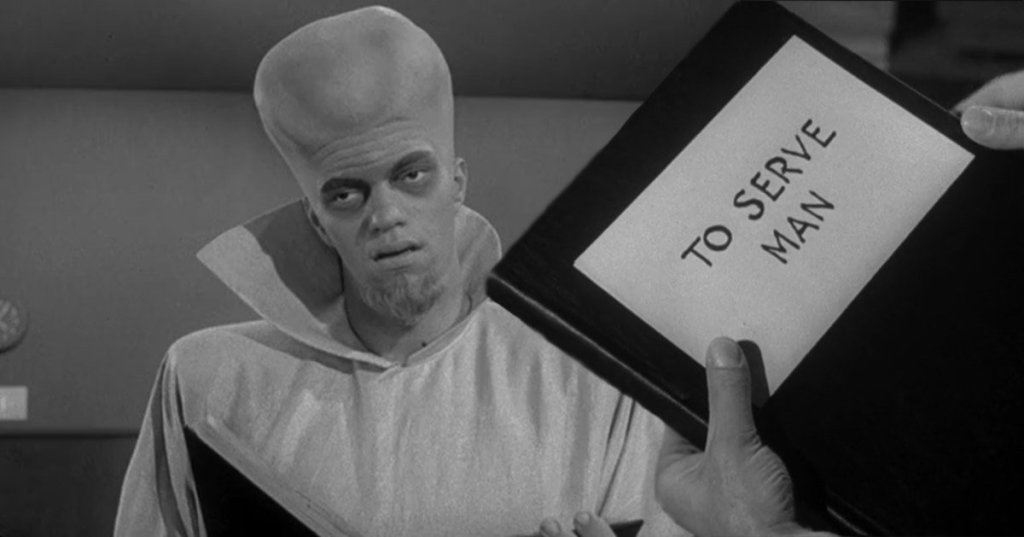
To Serve Man
Along with “Nightmare At 20,000 Feet,” and “Time Enough At Last,” “To Serve Man” has achieved near universal pop culture awareness, thanks in no small part to the famous line: “It’s a cookbook!”
We first encounter Michael Chambers locked in a room aboard a craft. A voice delivers him food from the other side of the wall, but he refuses. So we immediately know something is going to go wrong in this episode, mostly told in flashback. Through Chambers’ retelling, we learn of the nine-foot-tall Kanamit aliens who arrived with a promise to fix Earth’s problems. Offering a solution to food and energy shortages, and an end to international strife; the telepathic beings seem willing to help humans for free. And following their address to the United Nations, the Kanamit ambassador accidentally leaves behind his book in their alien language.
Chambers, a cryptographer, is charged with translating the book as the Kanamits deliver on their promises. When Chambers’ staff member Patty deciphers the title of the book to be “To Serve Man,” it appears to confirm the aliens’ benevolent intentions. As humans line up to take a trip to the Kanamit paradise planet, Chambers included, Patty rushes to the alien ship to warn that she deciphered more of the book, and—say it with us—it’s a cookbook!
Chambers is forced on the ship, and returning to his present within the locked room, he is again offered food because he is losing weight. He takes the dish this time, warning the audience – in a rare instance where The Twilight Zone broke the fourth wall—“sooner or later, all of us will be on the menu… all of us.”
There are plot devices in “To Serve Man” that strain even The Twilight Zone’s credulity. A hyper intelligent being unknowingly leaving behind a cookbook written in an alien language that just happens to be easily decoded without any pre-existing Kanamit symbology available? It’s a stretch, and a twist that needed a set-up. It punctuates the humor of The Simpsons’ “How to Cook For 40 Humans” joke in the first Treehouse of Horror. And though the specifics of the twist are kept under wraps, we know from the beginning these Kanamits are up to something.
Still, this is a great third season episode Serling adapted from Damon Knight’s story because humanity falls for the ruse. Clearly Earth needs a helping hand—certainly not something we can relate to 58 years after this aired in 1962—and despite some show of skepticism, humans fall in line rather quickly. Chambers even gets lax on an important “trust, but verify” task of decoding the book. Interestingly, the humans who board the Kanamit ship appear to be volunteering to become cattle, which makes one wonder if those back home on Earth get to live the good life forever.
Serling’s wry closing narration adds the final ingredient to the tasty recipe of this comfort food episode:
“The recollections of one Michael Chambers with appropriate flashbacks and soliloquy. Or more simply stated, the evolution of man. The cycle of going from dust to dessert. The metamorphosis from being the ruler of a planet to an ingredient in someone’s soup. It’s tonight’s bill of fare from the Twilight Zone.”
The Vast of Night is now streaming on Prime Video.

